Introduction:
In today’s complex business environment, seamless integration between different systems is paramount for efficient operations. SAP Global Track and Trace (GTT) plays a pivotal role in connecting backend systems, such as SAP S/4HANA or external solution partner systems, ensuring a smooth flow of information across the supply chain. However, when issues arise during integration, administrators need robust tools to troubleshoot and resolve problems promptly. The View Logs app in SAP GTT emerges as a crucial resource for administrators, offering insights into message processing and providing the necessary visibility to ensure a resilient supply chain. This blog will provide an in-depth overview of the View Logs app.
Understanding the View Logs App:
The View Logs app in SAP GTT is designed with administrators in mind, offering a comprehensive overview of available logs within the global track and trace system. As integration relies on message-based communication, the app becomes an essential tool for troubleshooting and maintaining a healthy integration environment.
Message Logs:
The Message Log View is the first stop for administrators seeking an overview of message processing. The initial app tile provides a snapshot of message status through a donut chart.
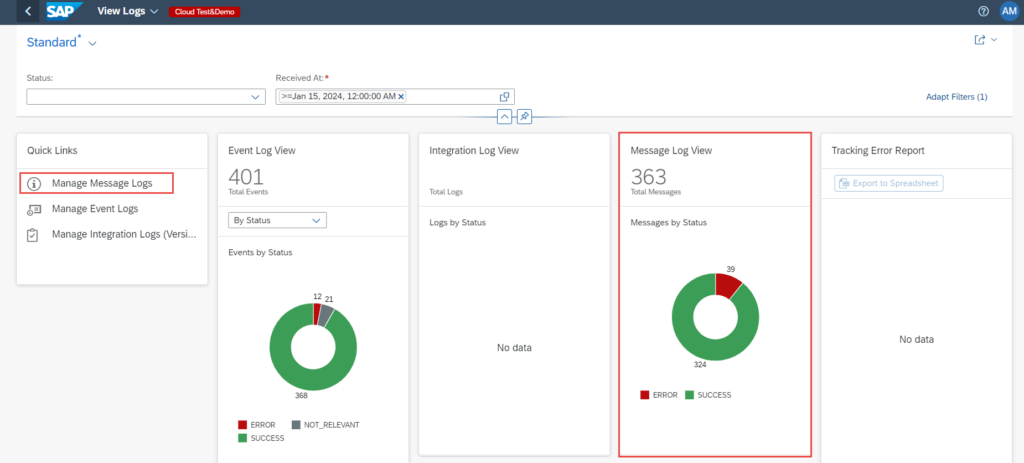
Clicking on a specific section of the chart leads to the Manage Message View page, revealing a list of messages. From this worklist, administrators can delve into message details, exploring the process flow and payload. The flexibility to manually retrigger events from the process flow adds a layer of control and responsiveness to administrators.
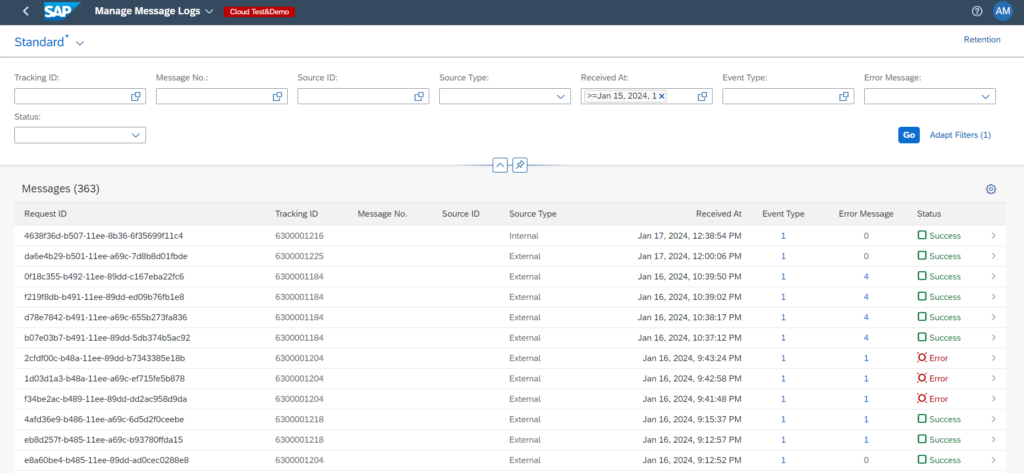
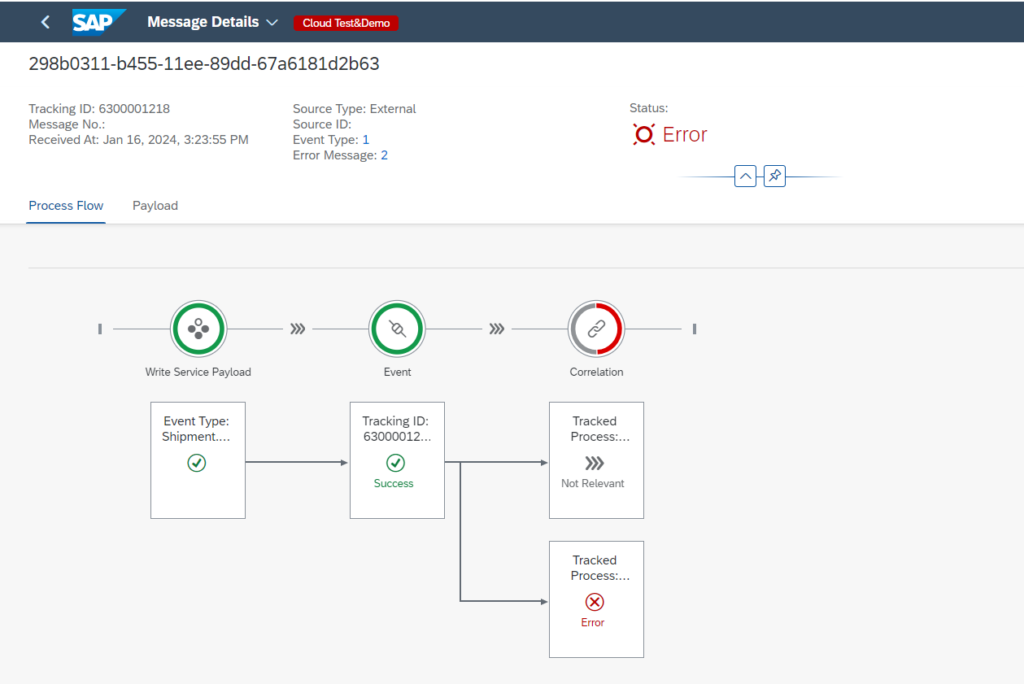
Event Logs:
The Event Log View offers administrators insights into logs for events, categorized by event processing status or error message codes.
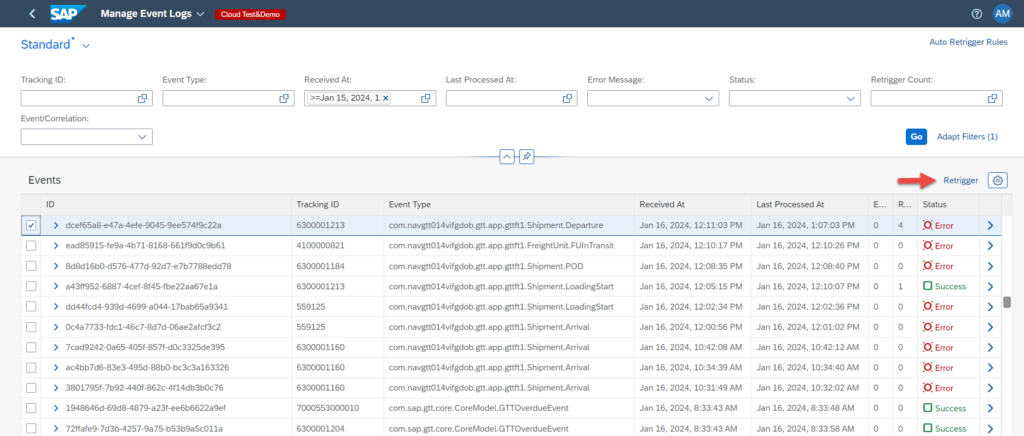
Clicking on the donut chart reveals a list of events, and administrators can navigate to the Event Details page for a detailed view of the event process flow, history, and payload. This functionality enables manual event retriggering and the configuration of rules for automatic event retriggering, enhancing proactive issue resolution and system reliability.
Integration Logs:
The Integration Log View aggregates logs related to inbound and outbound integration messages between backend SAP systems or solution partner systems and global track and trace.
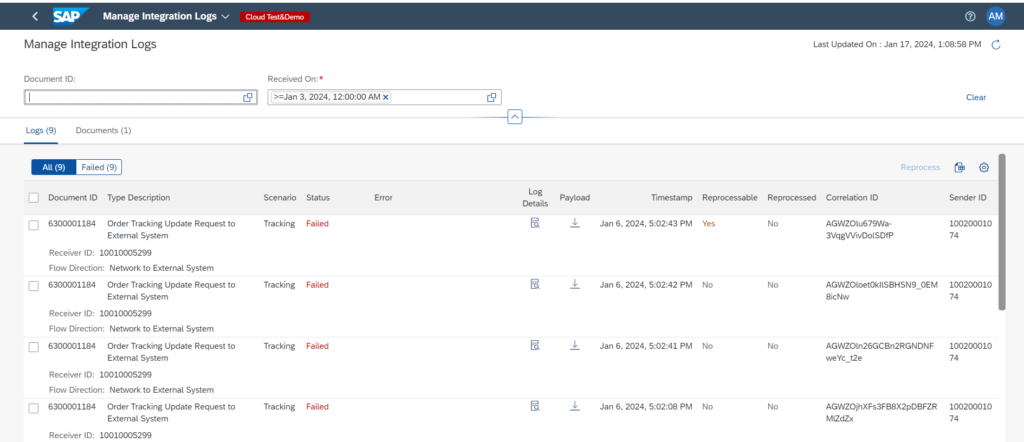
Administrators can identify and reprocess messages with a status of Failed or Escalated, addressing issues like missing configuration or service unavailability due to technical reasons. This capability ensures a streamlined approach to resolving integration challenges promptly.
Benefits of Using SAP
GTT View Logs App:
1. Proactive Troubleshooting: The View Logs app empowers administrators to proactively identify and address issues in message processing, event handling, and integration. This proactive approach
minimizes downtime and ensures the reliability of the entire supply chain.
2. Enhanced Visibility: With the ability to drill down into message details, event processes, and integration logs, administrators gain enhanced visibility into the intricacies of the system. This transparency is crucial for making informed decisions and optimizing integration performance.
3. Time and Cost Savings: The app’s
user-friendly interface and detailed logs streamline the troubleshooting process. This efficiency translates into significant time and cost savings for administrators, allowing them to focus on strategic tasks rather than grappling with integration issues.
Conclusion:
The SAP GTT View Logs App stands as a powerful ally for administrators dealing with the complexities of integration in the global track and trace ecosystem. By offering a detailed overview of message, event, and integration logs, the app enables proactive troubleshooting, enhance visibility, and ultimately contributes to a resilient and efficient supply chain. As businesses continue to navigate the intricacies of a connected world, tools like the View Logs app become indispensable for maintaining the reliability and integrity of their integrated systems.